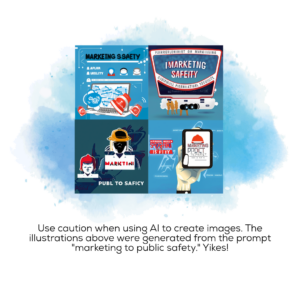In the busy world of marketing, it can be tempting to push projects forward to keep “doing something.” Sometimes we need to take a step back to assess why we’re working on the tasks at hand and how they align with the broader goals of the organization.
What’s helped the RedFlash Group prioritize work for our clients and ourselves is to evaluate each activity or goal from both a strategic and tactical marketing approach. Employing this technique ensures that every little deadline is met while also making progress toward the larger strategic goals.
So what is the difference between these two methods and how can you use both of them together to make the most of your marketing efforts?
STRATEGIC MARKETING ensures that marketing efforts are aligned with the company’s business goals, and asks important questions like:
- Do you know your audience? Who are they?
- What media channels are they active on?
- What do people think of your brand?
- How will industry trends affect your business goals?
A strategic marketing plan should include a period of information gathering, such as market and industry research, competitive intelligence, customer feedback and interviews that will drive the subsequent tactics in the next part of the plan. Rather than having a checklist of deliverables, strategic marketing provides an educated framework and direction.
Once the strategic plan is put in place, it should still be considered a “living” document that is refreshed when the organization makes any major shifts in strategic direction or when priorities change. Instead of falling into the “create it and forget it” trap, refer back to the plan to help ensure that new tactics or ideas
align with those that set the course for your marketing strategy.
One of our clients, a large software vendor who creates solutions for numerous different industries, wanted to better position their public safety products. Their internal marketing team, however, wasn’t familiar with the nuances that come with messaging and understanding the specific needs of the public safety industry.
We first took a strategic marketing approach by researching the company’s target audience, media channels and understanding the overarching sales goals. Then we shared our recommendations in a strategic marketing plan with their internal marketing team and prepared for the next step – the tactics.
TACTICAL MARKETING is the execution of the strategic plan. Marketing tactics can come in all shapes and sizes, and include end products such as:
- Product brochures
- Email lists
- Speaking engagements
- Social media channels
This particular client’s focus was on their marketing presence and collateral for upcoming tradeshows. We worked with their team to prioritize which shows they should have the biggest presence at; what sponsorship packages aligned best with their target audiences and sales goals; and provided specific recommendations for booth and ad design, pre- and post-show emails and leave-behind materials.
When time, budget or resources are limited, strategic marketing efforts are often scaled down or eliminated before tactics are reduced, but we are strong advocates for looking at them equally. A tactical marketing plan without the appropriate strategy in place is just “busy work.” A strategic marketing plan without the tactics usually never leaves the confines of the office.
When priorities shift and deadlines become more imminent, do you take a step back to ensure that the tactics stay true to your marketing strategy? And that your strategy will help achieve your organization’s goals?
Related Posts
-
Selling to public safety is not the same as selling in other industries. Discover 3…
-
So today I realized I’ve been to about 250 public safety conferences over the past…
-
It’s a common lament among companies and organizations serving healthcare and public safety: there are…









 The RedFlash Group is a GSA Contract Holder under Schedule 541, Advertising and Integrated Marketing Solutions
The RedFlash Group is a GSA Contract Holder under Schedule 541, Advertising and Integrated Marketing Solutions